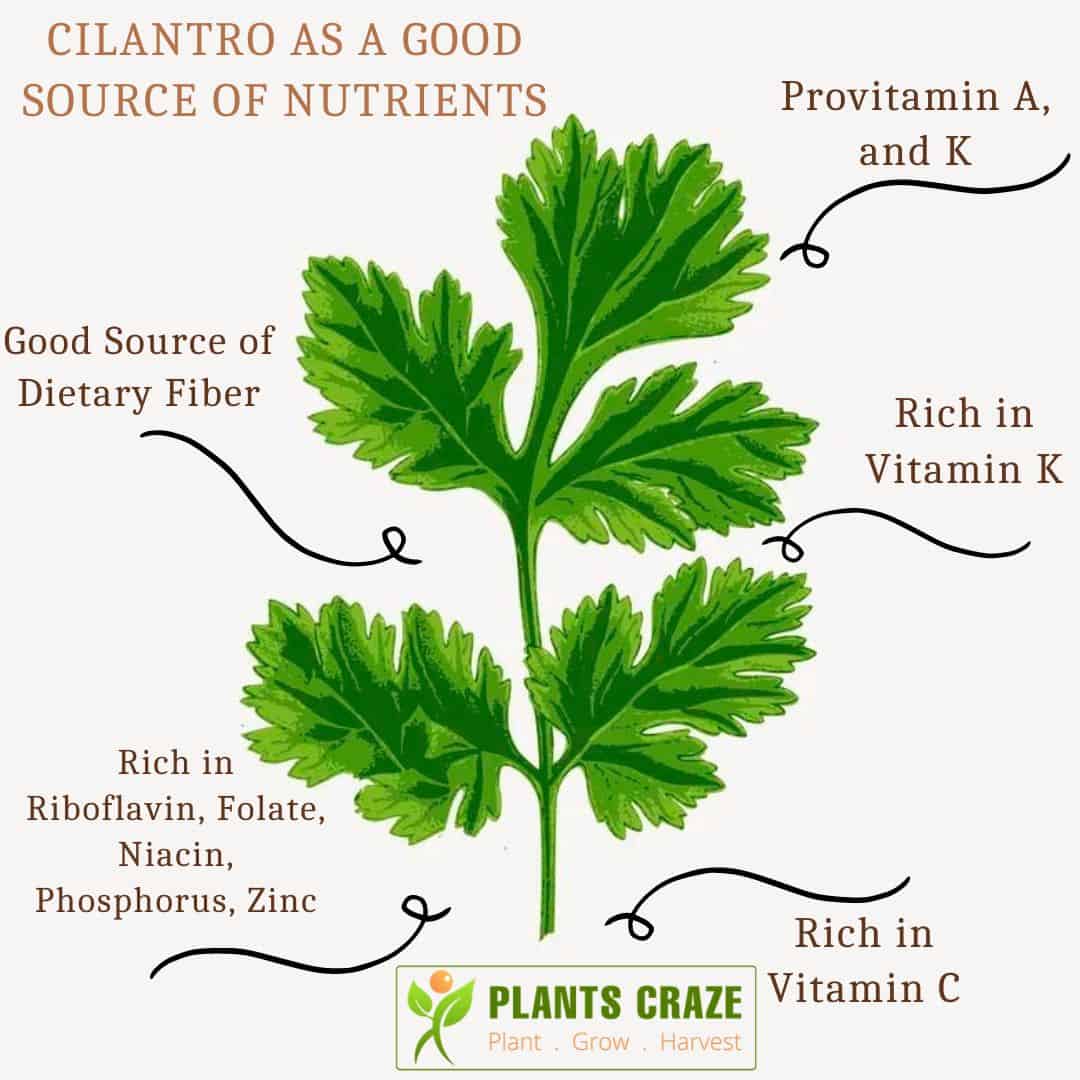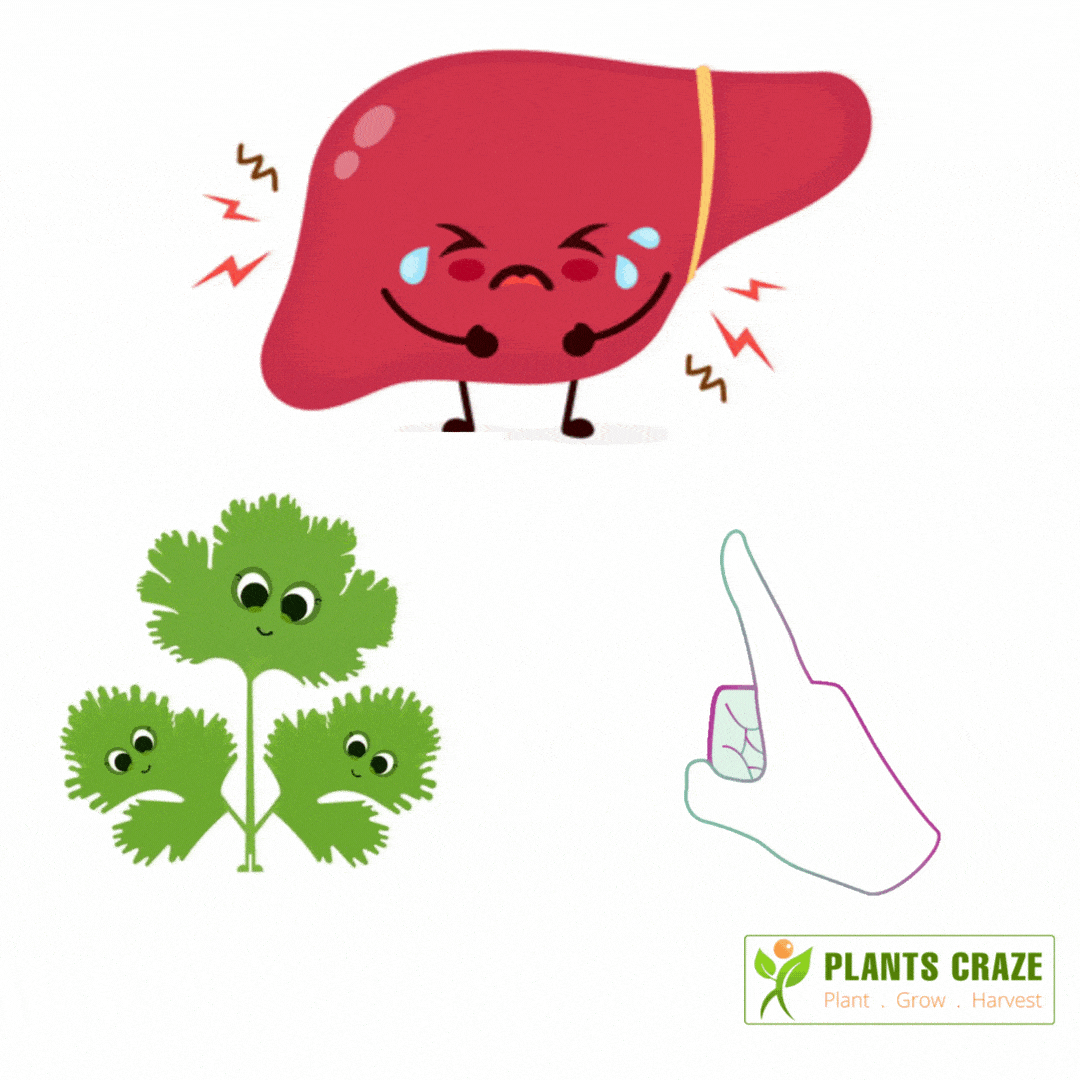The Cilantro plant is an aromatic herb whose taste might be unbearable to many. But do not throw it away, as Cilantro holds nutritional and health benefits.
Keep reading to highlight the benefits of the Cilantro plant and its primary uses in our daily life.
Table of Contents Show
Cilantro Plant Overview
Cilantro is a popular herb known by different nicknames, such as “Mexican and Chinese Parsley,” with all parts edible, including the seeds.
Look at the table below to learn about the Cilantro plant’s quick facts.
| Indicator | Identity |
|---|---|
| Common Name | Cilantro |
| Family | Apiaceae |
| Genus | Coriandrum |
| Plant type | Annual |
| USDA zone | 3 to 11 |
| Native | Asia, Africa, and some parts of Europe |
| Blooming Period | Spring |
| Flower color | White and Whitish-pink |
| Flower structure | Cluster of flowers called an umbel |
| Life Span | About six to seven weeks |
| Toxicity | Non-Toxic |
Cilantro is most useful in our kitchen, although some people use it for decoration as it is equally easy to grow and care for.
Nutritional Value of Cilantro
Cilantro holds medicinal benefits because of the various nutrients, such as vitamins, potassium, magnesium, zinc, etc., present in the plant.
According to the USDA data, 100 grams of Cilantro plant has the following nutritional value.
| Principle | Nutrient Value |
|---|---|
| Calcium | 67 mg |
| Magnesium | 26 mg |
| Zinc | 0.5 mg |
| Iron | 1.77 mg |
| Carbohydrate | 3.67 kcal |
| Fiber | 2.8 grams |
| Protein | 23 kcal |
| Fat | 0.52 Kcal |
| Choline | 12.8 mg |
| Vitamin A | 6750 IU |
| Vitamin C | 27 |
| Riboflavin | 0.162 mg |
| Niavin | 1.11 mg |
| Vitamin B6 | 0.149 mg |
| Folate | 62 mcg |
| Pottassium | 521 mg |
| Phosphorus | 48 mg |
| Sodium | 46 mg |
| Copper | 0.225 mg |
Cilantro Plant Benefits
The Cilantro plant is more than just a herb. Also called Coriander, Cilantro is a vital component of many Mexican and Asian dishes.
Besides, the Cilantro plant has numerous proven health benefits, with major ones listed below.
1. Rich in Antioxidants
Antioxidants are crucial substances that prevent cellular damage caused by free radicals and fight the inflammation in our bodies.
Moreover, the Cilantro plant contains antioxidants like terpinene, quercetin, and tocopherols, making it a functional food.
Such molecules help boost immunity and act like neuroprotective agents, eventually preventing premature aging and reducing other disease risks.
2. Helps Lower Blood Sugar
Cilantro contains different nutrients such as potassium, vitamins, magnesium, iron, etc.
Due to the presence of these nutrients, the Cilantro plant can help reduce blood glucose levels and maintain insulin activity in diabetics.
Similarly, Coriander seed extract enhances insulin release and lowers blood sugar levels in diabetic rats compared to control mice.
People with low blood sugar levels should take precautions while consuming Cilantro as its stimulating enzymes are vital.
3. Good Source of Nutrients
Beyond the antioxidant values, the Cilantro plant is a significant source of nutrients like riboflavin, folate, niacin, phosphorus, and zinc.

Besides improving bone health, vitamin K in the flowers of Cilantro also plays a crucial role in lowering the risk of heart disease and blood clotting.
It is also a blessing for pregnant women as they need 90 mcg of vitamin K daily.
Furthermore, Cilantro is also a good source of dietary fiber, calcium, iron, potassium, magnesium, and vitamins A, C, E, and K.
Just a quarter cup of fresh cilantro provides 16% of the daily recommended intake for vitamin K and 270 IU of vitamin A.
4. Boasts Anticonvulsant Properties
Anticonvulsant property is essential in controlling excess seizures in epilepsy and other diseases.
The researchers have found that the components of the Cilantro bind with a part of the potassium channels.
This, in turn, helps to reduce cellular excitability within the human body.
The potassium channels in the Cilantro plant have also helped to make various anticonvulsant medicines.
Researchers from the University of California-Irvine discovered a highly effective Potassium Channel Subfamily Q (KCNQ) activator in the leaves of the cilantro.
This discovery is significant as it may lead to more effective use of Cilantro to develop more effective anticonvulsant drugs.
5. Reduces Anxiety
The Cilantro plant contains several natural sedative properties. Due to this, the plant can help to calm our nerves.

While valium can have several side effects, like hallucinations, aggression, and memory problems, the cilantro extract can relieve anxiety without causing these side effects.
Additionally, Cilantro is found to influence the activity of the brain’s electrophysiology through its volatile organic compounds (VOCs).
These VOCs, in turn, help to improve people’s negative emotions.
6. Contains Anti-Microbial Properties
Besides its benefits to the human body, Cilantro plants possess anti-microbial and anti-fungal properties.
Recent research concluded that the oil extract of Cilantro seeds acts on pathogenic bacteria to kill the cellular membrane.
These compound helps protect your body against infections and illnesses caused by contaminated food.
Further, Coriander may facilitate healthy digestion for IBS sufferers by reducing unpleasant digestive symptoms such as bloating and discomfort.
7. Improves Heart Health
Molecules journal revealed that the parts of the Cilantro plant protect our body from many cardiovascular diseases.
Hence the Cilantro plant may enhance your heart health by lowering blood pressure and bad cholesterol while increasing good cholesterol.
However, new research is still ongoing to find the benefits of the Cilantro plant on the human heart.
Additionally, rates of heart disease appear to be lower among cultures that regularly consume Coriander compared to people following the Western diet.
8. Possesses Several Skin Benefits
Since Cilantro can fight free radicals, it can help prevent wrinkles and aging early.
Furthermore, people also use the juice of Cilantro leaves to treat several skin conditions, such as pigmentation, acne, oiliness, etc., even though proper research is still lacking on this.
Not only this, but Cilantro may also treat mild rashes like dermatitis.
9. Cilantro for Healthy Kidneys
Foods like Cilantro offers kidney-specific nutritional and health benefits.
Researchers concluded that Cilantro protected renal health and assisted in removing lead from the body.
Moreover, Cilantros help to improve the filtration rate of kidneys. Thus allowing our bodies to flush out harmful toxins and microbes quickly.
Overall, Cilantro helps to keep the urinary system clear.
10. Cilantro Benefits Liver Function
Cilantro may support the maintenance of liver function by shielding your liver cells from toxins.

Similarly, the same study found that polyphenol was highly concentrated in Cilantro leaves and that these compounds act as natural cleansing agents.
These active ingredients have antibacterial and anti-inflammatory effects that help treat the fatty liver by clearing its fat and necrosis.
It ensures the proper functioning of the liver. Thus, incorporating Cilantro into your diet may benefit people treating fatty liver.
Health Considerations to Keep in Mind
Every plant has its practical value, sometimes with a few drawbacks, like people finding its taste a little “soapy” and its smell pungent and in rare cases, a few may have skin irritation too.
For the most part, Cilantro is healthy to eat, but too much of it can harm your health leading to allergic reactions, upset stomach, flu, and blood clotting disorders.
People with low blood pressure should be more cautious while consuming Cilantro, as it controls the amount of cholesterol in our bodies.
Nevertheless, consuming Cilantro in small amounts, such as 1-2 tablespoons daily, will be safe enough for you.
Hence besides having a substantial beneficial value, Cilantro has very few drawbacks.
How to Eat Cilantro Plant?
The Cilantro plant is well-known for its culinary uses in the kitchen, mainly in Asia, Africa, and middle-east.
The secret is enjoying yourself while exploring how Cilantro can liven up a dish. Drinking Cilantro is one of the simplest ways to reap its benefits.
You can make tea using this method with any herbs. Let’s see the detailed recipe here.
- Take some fresh Cilantro leaves.
- Boil some water and steep the leaves in hot water for 5-7 minutes.
- Strain the leaves and drink them up.
Besides the whole plant, the seeds, called Coriander, are also widely used as spices worldwide.
However, despite its preference by many people, some may not find its smell pleasant. Likewise, folks also claim this plant has a “Soapy Taste.”
So if you’re not a massive lover of Cilantro in its fresh, raw form, search online for other recipes that use this herb.
Where to buy Cilantro Plant?
The popularity of this aromatic plant has spread across different continents. Hence it is readily available on the U.S. market via nurseries and online platforms.
The online shopping plant websites where you can buy the Cilantro plant are as follows:
| Shops | Delivery |
|---|---|
| Fresh Direct | 4-5 business days |
| Hooks Green Herbs | Within 10 days |
| The Growers Exchange | 5-7 business days |
| Walmart | Same day delivery |
To Conclude
People love Cilantro plants because of their rich supply of vitamins and other minerals.
Similarly, it deserves great praise for its capacity to alleviate specific health issues in the human body. Thus, Cilantro offers advantages that we cannot ignore.


